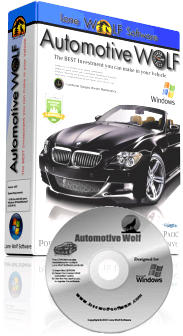|
Windows XP/7/8/10/11
|
 |
 No Risk 30 Day Free Trial |
HOME | INTRO | FEATURES | DOWNLOAD | PURCHASE | SCREEN SHOTS | REVIEWS | CAR CARE TIPS |
| Car Care Tips - Wheel Alignment |
| Car wheel alignment refers to the adjustment
of the angles of the wheels so that they are parallel to each other
and perpendicular to the ground. Proper wheel alignment is essential
for optimal vehicle handling, tire wear, and overall driving
experience. The frequency of checking the wheel alignment on your
car can vary depending on several factors, including your driving
habits, road conditions, and the specific recommendations of your
vehicle's manufacturer. Here are some general guidelines: 1. Regular maintenance schedule: It is a good practice to include a wheel alignment check as part of your vehicle's regular maintenance routine. Many manufacturers suggest having the alignment inspected once a year or every 10,000 to 12,000 miles (16,000 to 19,000 kilometers), whichever comes first. This can help identify any issues and ensure that your vehicle's alignment remains within the recommended specifications. 2. Signs of misalignment: Even if you haven't reached the recommended interval, it's important to check the wheel alignment if you notice any signs of misalignment. These signs can include the car pulling to one side, uneven or rapid tire wear, steering wheel vibration, or the steering wheel not being centered when driving straight. If you experience any of these symptoms, it's advisable to have the alignment checked as soon as possible. 3. After certain events or modifications: It's also a good idea to check the wheel alignment if your vehicle has been subjected to significant impacts, such as hitting a curb, pothole, or any other road hazard. Additionally, if you've recently had suspension or steering components replaced or made modifications to your vehicle's suspension, it's important to ensure that the alignment is still within the correct specifications. Remember that these are general guidelines, and it's essential to refer to your vehicle's owner's manual for specific recommendations regarding wheel alignment checks. The manual will provide the most accurate information based on the make, model, and year of your car. If you're unsure about the alignment status of your vehicle or have any concerns, it's best to have a professional mechanic or alignment specialist inspect your vehicle's alignment and make any necessary adjustments. They have the expertise and specialized equipment to accurately assess and correct any alignment issues.
Here are some key points about car wheel
alignment: |
Easily Track and Manage Maintenance Schedules for any type of Vehicle by Time, Distance or Hours
30 Day FREE Trial
HOME | INTRO | FEATURES | DOWNLOAD | PURCHASE | SCREEN SHOTS | REVIEWS | Videos | FAQ | EULA | CONTACT US | CAR CARE TIPS |
Copyrightę Lone Wolf Software - www.lonewolf-software.com
Automotive Wolf Car Maintenance Software can also be found at :
Car Care | Contact Management | Home Inventory & Management | Backup | Text & Document Organization | Web Site Monitoring | ToDo Lists



